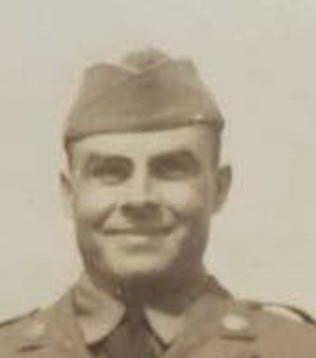Alumnus lost in World War II finally returns home
 “Killed in Action in the Southwest Pacific” read the column beneath the picture of Private Andrew Joseph Ladner published February 10, 1943, in the Daily Herald. The column further stated that Ladner had attended Harrison-Stone-Jackson Junior College, now Mississippi Gulf Coast Community College’s Perkinston Campus. At Perkinston Professor William Gregory read the article and placed a gold star signifying killed in action next to Ladner’s name on the War Memorial Plaque he was overseeing. That plaque eventually wound up on the wall of Greogry War Memorial Chapel on the Perkinston Campus. The gold star was Ladner’s only requiem for decades.
“Killed in Action in the Southwest Pacific” read the column beneath the picture of Private Andrew Joseph Ladner published February 10, 1943, in the Daily Herald. The column further stated that Ladner had attended Harrison-Stone-Jackson Junior College, now Mississippi Gulf Coast Community College’s Perkinston Campus. At Perkinston Professor William Gregory read the article and placed a gold star signifying killed in action next to Ladner’s name on the War Memorial Plaque he was overseeing. That plaque eventually wound up on the wall of Greogry War Memorial Chapel on the Perkinston Campus. The gold star was Ladner’s only requiem for decades.
For 80 years, his family had no idea what had happened to him. They were told he had been killed in action, but his whereabouts remained unknown until July 2021 when his body was located and identified in the Manila American Cemetery and Memorial in the Philippines. It had been moved there in 1949.
How did this happen? Eventually the facts emerged.
Early 1942 was a pivotal time for the Allies in the Pacific Theater of World War II. The Japanese were pushing hard through the islands in the Pacific, forcing Australian and U.S. troops to push them back from strategic fortifications. Operations in the tropical islands were severely hampered by terrain, vegetation, climate, disease, and the lack of infrastructure.
During the searing battle of Buna-Gona in New Guinea, U.S. Army Private Andrew J. Ladner of Lizana disappeared.
His unit’s objective was to cut off Japanese supply and communications lines from the nearby village of Sanananda. On November 30, 1942, the unit mounted a blockade — later known as the Huggins Roadblock. The unit members held their position for 22 days before their rescue by Australian troops. Unfortunately, the Japanese killed Ladner before the rescue
After the Allied victory, the American Graves Registration Service combed the Huggins Roadblock battle site for the bodies of American soldiers but declared Ladner nonrecoverable in 1950.
It turned out, however, that Ladner’s remains had been found in April 1943 and buried at a temporary U.S. cemetery in the nearby village of Soputa. The body, still unidentified, was later moved to the Philippines.
Beginning in 1995, organizations dedicated to finding World War II POW/MIA soldiers launched a new effort to identify men from the Huggins Roadblock. They found three new bodies near the battle site, but none were identified as Ladner.
Later, a Defense POW/MIA Accounting Agency (DPAA) review of unknown casualty records prompted the exhumation of Ladner’s body—listed only by the number X-1545—in November 2016 from its location in the Philippines. DPAA scientists at Offutt Air Force Base in Nebraska took advantage of new technologies including dental analysis and mitochondrial DNA analysis, as well as anthropological and circumstantial evidence, to identify the body. The identification was confirmed by DPAA in July 2021.
Then on April 9, 2022, Ladner’s body lay in a flag-draped coffin for a funeral service in St. Thomas Catholic Church in Long Beach. As part of the service, a Purple Heart Ceremony was performed and his family was presented the Purple Heart, the Bronze Star, and all of the rest of Ladner’s posthumous medals. Following the funeral services, a hearse transported Ladner on his final journey to Wolf River Cemetery north of Pass Christian. Private Andrew Joseph Ladner is home at last.
Those wishing to contribute a memorial donation in honor of Private Andrew J. Ladner can do so through mgccc.edu/alumni/mgccc-foundation/memorial-donations.
